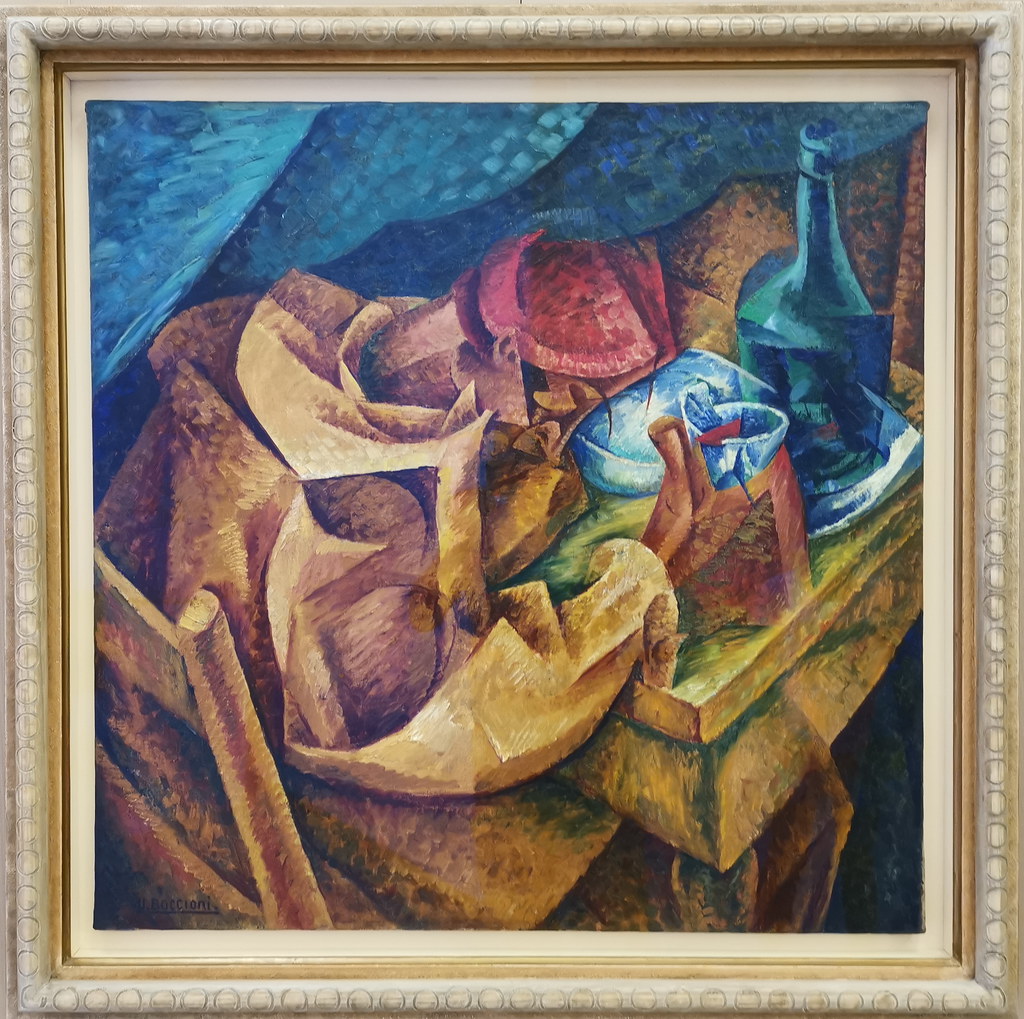Futurism first appeared on February 20, 1909, when the French newspaper Le Figaro published a manifesto written by the Italian poet and editor Filippo Tommaso Marinetti. Marinetti coined the word Futurism to express his desire of discarding the art of the past and celebrating change, originality, and innovation in culture and society.

Marinetti’s manifesto glorified new automobile technology with its speed, power, and movement. Glorifying violence and conflict, he called for the repudiation of traditional values and the destruction of cultural institutions such as museums and libraries. The rhetoric of the manifesto was passionately bombastic; its aggressive tone was intended to inspire public anger and stir controversy.

Image source: https://search.creativecommons.org/photos/56eac4e4-9aeb-4ec0-b77a-3a615c78a56a by rverc

Image source: https://search.creativecommons.org/photos/37b68c4e-fd7e-430c-8787-2dfc4d470cdf by Biblioteca Centrala Chisinau
What was the Futurist Manifesto?
With the publication of the “Futurist manifesto” on the front page of the French newspaper Le Figaro in 1909, Marinetti launched Futurism. The manifesto set a fiery tone. Marinetti goes against the cultural tradition and calls for the destruction of museums, libraries, and feminism. Soon Futurism became an international movement whose participants published posters for almost every type of art: painting, architecture, sculpture, photography, music, cinema, and even clothing.

Image source: https://search.creativecommons.org/photos/a9a895f3-d8d7-4dd2-9cf6-2e6b0f1662b0 by Allie_Caulfield

Image source: https://search.creativecommons.org/photos/c2b23804-6896-4232-b23f-b3552d027d0c by George M. Groutas
Which was the main features of Futurism?
The Futurists were fascinated by the problems of representation of modern experience and made efforts so that their paintings evoke all kinds of sensations even those not visible. The noise, the heat and even the smell of the metropolis are elements that Futurist art has remembered.

Image source: https://search.creativecommons.org/photos/dba99a69-7e5c-4f43-90f2-4b93f25dba6e by dalbera
Futurism was not immediately identified with a distinctive style, unlike Impressionism and Pointillism. Its adherents borrowed various aspects from Post-Impressionism, including Symbolism and Divisionism. In 1911 a distinctive Futurist style emerged, a product of Cubist influence.

(Post Impressionists )-A Wheatfield, with Cypresses, Vincent Van Gogh, 1889
Image source: https://www.metmuseum.org/art/collection/search/436535
Futurists were fascinated by new visual technologies, especially chrono-photography, which showed the movement of an object through a sequence of frames, this technology affected their way of showing movement in painting, leading to abstract art with rhythmic, pulsating qualities.

What characterized the Futurism’s style?
The Futurists were particularly excited by the works of the late 19th-century scientists and by the photographer Étienne-Jules Marey, whose chronophotographic (time-based) studies depicted the mechanics of animals and humans movement. He was a precursor of the cinema and his innovative experiments with time-lapse photography were particularly influential for Balla. In his painting Dynamism of a Dog on a Leash, the artist playfully depicted the dog’s (and dog walker’s) feet in continuous movements through space over time. Fascinated by the idea of “dynamic,” the Futurists sought to express an object’s sensation, rhythm, and movement in their images, poems, and manifestos. Such characteristics were beautifully expressed in Boccioni’s most iconic masterpiece, Unique Forms of Continuity in Space (see above).
Info sources:
For more references, please also visit: www.jbdesign.it
